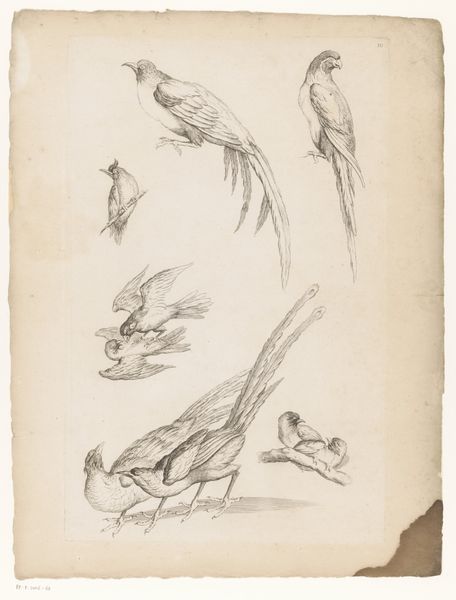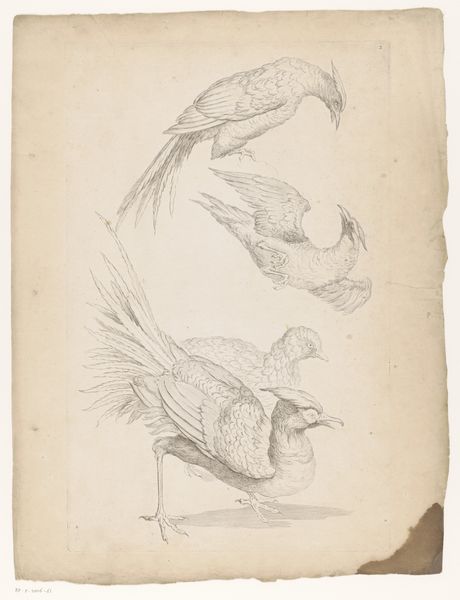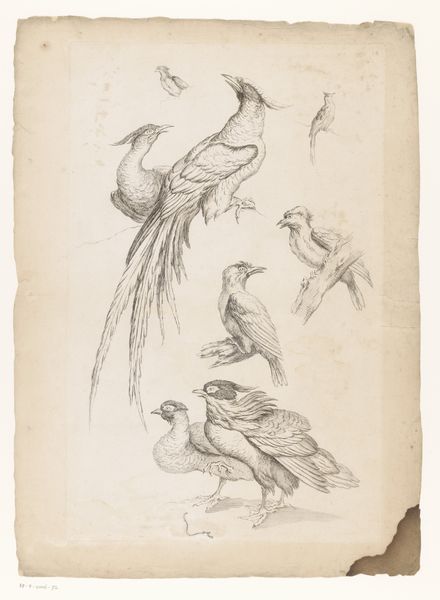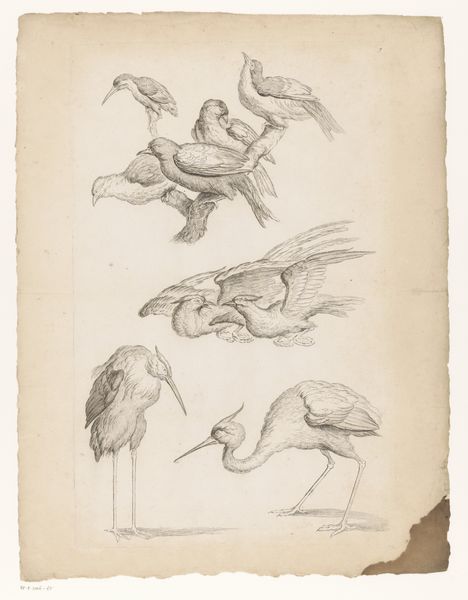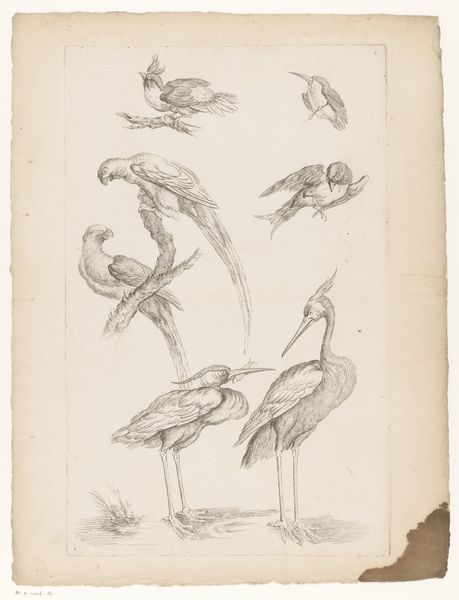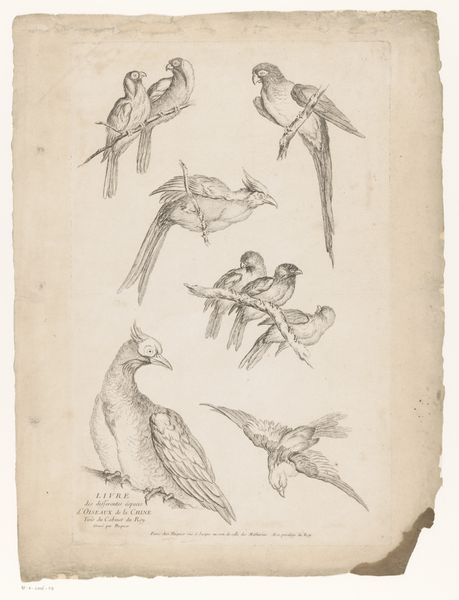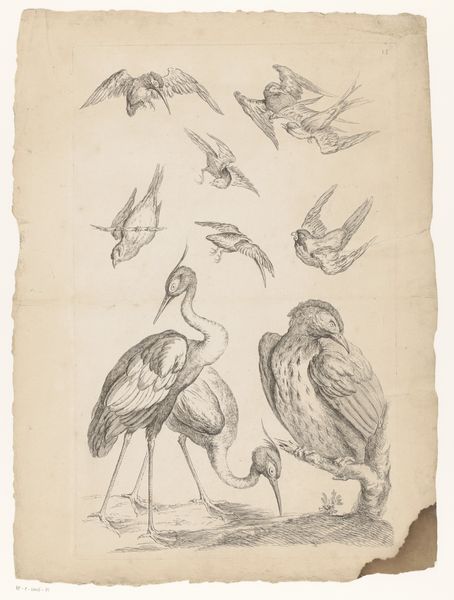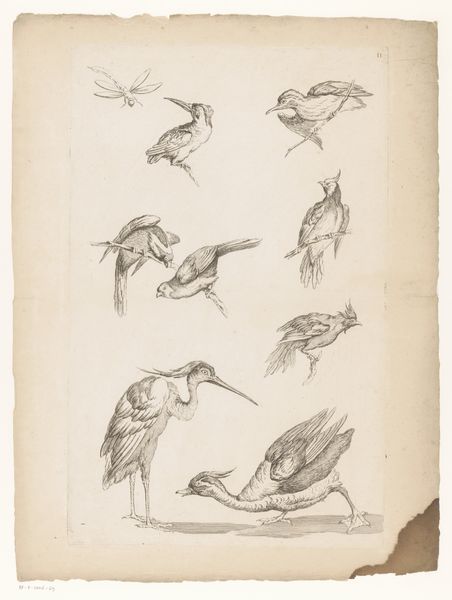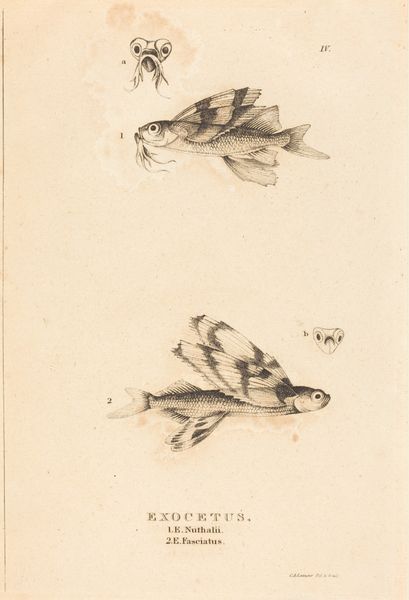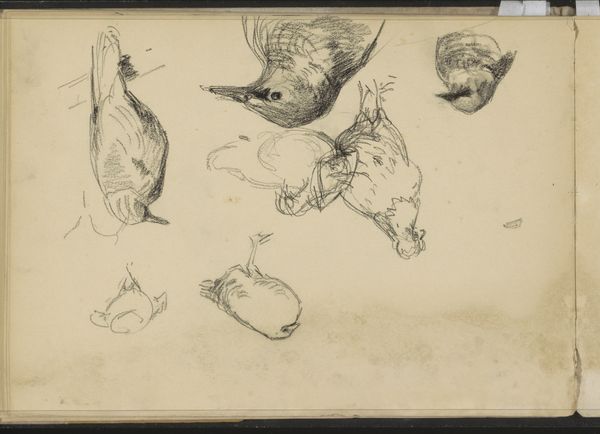
drawing, paper, ink, engraving
#
drawing
#
animal
#
pen sketch
#
pencil sketch
#
figuration
#
paper
#
ink
#
orientalism
#
engraving
Dimensions: height 548 mm, width 345 mm
Copyright: Rijks Museum: Open Domain
Gabriel Huquier created "Zes Chinese vogels," or "Six Chinese Birds," as an etching sometime in the 18th century. Immediately, one is struck by the delicacy of line, a meticulous arrangement that captures the birds with anatomical precision. The monochromatic palette, achieved through fine hatching and cross-hatching, lends the scene a sense of quietude and formality. This composition isn’t just a faithful depiction; it engages with the philosophical currents of its time. The Enlightenment’s emphasis on observation and classification is palpable, but the arrangement of the birds is far from taxonomic. The clustered composition encourages a semiotic reading where each bird is a signifier, contributing to a larger narrative about natural philosophy and perhaps even the relationship between the observer and the observed. Consider, finally, the texture achieved through the etching process. This is not merely aesthetic, but structural. The visual texture invites a haptic engagement, a desire to touch and understand the very materiality of the image. "Zes Chinese vogels" operates at the intersection of art, science, and philosophy, reflecting a world where seeing is not just believing but also a form of knowing.
Comments
No comments
Be the first to comment and join the conversation on the ultimate creative platform.

